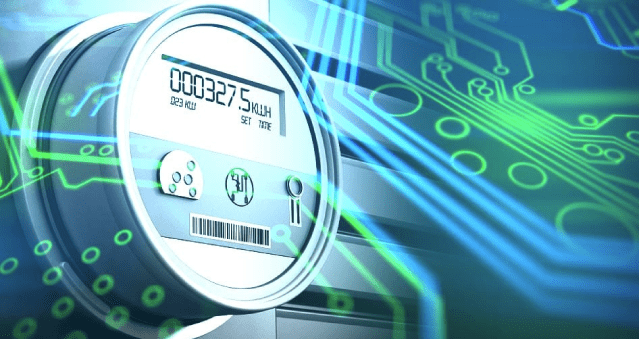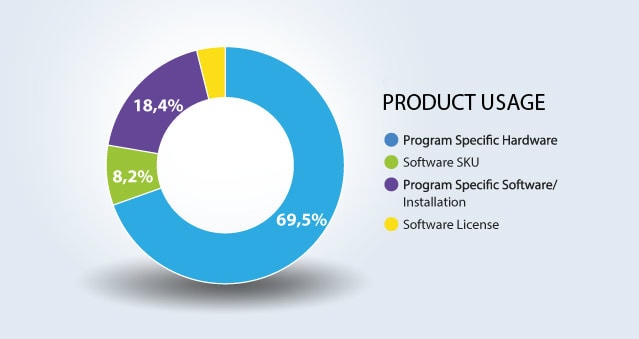The next evolution of pricing models is transforming how companies bill for products and services. Known as consumption-based pricing, this model charges customers based on their actual usage rather than a fixed fee. Also referred to as pay-as-you-go billing, usage-based, or metered billing, it follows a simple principle: “Use more, pay more; use less, pay less.”
Historically this was the pricing model of choice for utility companies like electric, gas, and water. However, companies within other industries are adopting consumption-based pricing in record numbers. Originally pioneered by infrastructure companies like Amazon Web Services (AWS) and Azure, this pricing model has gained in popularity among software providers such as software-as-a-service (SaaS) organizations, as well as IT services, cloud computing, and storage companies. In fact, in 2018 the adoption rate for usage-based pricing was 27%, nearly doubling to 46% in 2022 – with an additional 15% of companies actively testing this pricing model.
Consumption-based pricing allows organizations to track and bill for specific usage metrics, such as API calls, bandwidth, storage, or minutes used. While it offers flexibility for both businesses and customers, implementing this model involves careful planning – factoring in minimum usage commitments, account limitations, and hybrid pricing structures. As more industries embrace this model, companies must weigh its benefits against the operational complexities of billing and tracking consumption at scale.
Consumption-Based Pricing Models Explained
The most common consumption-based pricing models include:
- Per unit or pay-as-you-go: This pricing model allows customers to pay for only what they consume.
- Tiered pricing: Customers determine which tier best suits their needs. Once the customer reaches or exceeds the tier allowance, they are automatically moved to the next tier. Typically, the starter tier is provided for free.
- Volume pricing: A price-per-unit pricing model that is based on the highest tier the customer reaches during the billing cycle.
- Per-unit pricing: Also known as pay per use, this pricing strategy charges customers based on resources used such as API gateways which charge per API call.
- Multi-attribute: This pricing model charges customers based on a combination of a variety of metrics.
While not a comprehensive list, other consumption-based pricing models include subscription + pay-as-you-go, tiered with overage, pay-as-you-grow, and pay-as-you-save.
Consumption-Based Pricing Benefits and Disadvantages
Although not as straightforward as other pricing models like flat rate, consumption-based pricing is a win-win for businesses and customers alike.
- This model’s transparency makes it easy for the company to align cost with consumption.
- Simplifies the process of aligning recurring revenue with actual usage, which can aid in budgeting and forecasting.
- Provides the agility and flexibility to quickly respond to changing business, customer, and market trends.
- Enables businesses to grow faster with price points that are attractive to a larger customer base.
- Eliminates or shortens purchasing cycles.
- Improves customer retention by allowing customers to upgrade or downgrade based on their needs and budgets.
- Reduces revenue leakage, as you’re better able to optimize product and service usage.
- Allows you to quickly experiment and test various recurring revenue and consumption-based pricing combinations.
- Provides the ability to collect massive amounts of data, which can be used to determine how customers are using the products and services provided.
- Delivers a competitive advantage by enabling you to combine consumption-based pricing models with additional features or options to create differentiated packages and bundles.
- Increases investor appeal – on average, companies that incorporate a consumption-based pricing model trade at a 50% higher revenue multiple premium over their counterparts.
From a customer perspective, they can more easily equate value to price. Additionally, a consumption-based pricing model empowers them to only take advantage of the features and options needed but gives them more control over their budgets.
Business Disadvantages
Unlike basic subscription-based pricing models, usage fluctuation can result in a less predictable revenue stream. However, this doesn’t necessarily need to be a negative. While monthly revenue may rise and fall depending on if the company is retaining customers and/or acquiring new ones, annual revenue should remain stable or increase.
Additionally, without the right billing platform, billing can become substantially more complicated since consumption charges are typically billed in arrears. Finally, given ASC 606 and IFRS 15 revenue recognition rules, adhering to these regulations when handling consumption-based revenue recognition manually can be time-consuming and error-prone.
The Components of a Consumption-Based Pricing Model
Given that consumption-based pricing models are based on usage metrics, having the right data is essential. The following are the three components needed to help you track exact usage.
Metered billing
Primary to the success of a consumption-based pricing model is your ability to track the exact amount of usage. Metered billing (aka usage-based billing) incorporates a unit of usage (i.e., for electricity companies, this is watts and kilowatts) and charges a fixed amount per unit used.
Mediation
Since all data isn’t always presented in the same format, a mediation engine is needed. This enables you to collect and convert raw usage data from multiple sources, filter unnecessary usage records, and route the information to be rated and billed.
For instance, in the case of Voice Over IP (VoIP), mediation captures and normalizes data such as call duration, the transfer of megabytes of data, pricing for video usage, and the number of text-based messages from short message services (SMS) or multimedia messaging services (MMS).
Billing
When data doesn’t come through a mediation engine, billing will intermittently measure usage throughout the billing period. At the end of the billing cycle, billing uses the usage information to determine the price, plans, how to charge, and other pricing variables such as discounts and promotions.
Best Practices for Implementing Consumption-Based Pricing
Successfully adopting a usage-based pricing model requires careful planning and execution. By following structured steps and mitigating potential risks, businesses can build a scalable and transparent pricing strategy that enhances customer satisfaction and revenue growth.
Step-by-Step Implementation:
- Conduct Usage Pattern Analysis: Identify key customer usage patterns as well as customer needs and behaviors to determine the most effective pricing structure.
- Pilot with Select Customers: Test the model with a small customer group to refine consumption pricing strategies and address any unforeseen challenges.
- Develop Transparent Pricing Structures: Clearly communicate how charges are calculated to build trust and prevent billing confusion.
Risk Mitigation Strategies:
- Leverage Advanced Billing Platforms: Automate data collection, metering, and invoicing to reduce errors and maintain compliance with financial regulations.
- Train Sales Teams: Equip teams to manage hybrid pricing models and flexible pricing models while handling customer inquiries effectively.
By implementing these best practices, companies can seamlessly transition to a consumption-based usage pricing model while maintaining customer confidence and revenue predictability.
Industry Use Cases and Adoption Challenges
As consumption-based pricing gains traction, industries across the board are integrating this model to enhance customer flexibility and optimize revenue. However, adoption comes with unique challenges, particularly in balancing revenue predictability, accurate billing, and technological investment.
Key Industries Adopting Consumption-Based Pricing
- SaaS (Software as a Service): Many SaaS companies are embracing usage-based pricing to align costs with customer value. However, integrating hybrid pricing models – which blend subscriptions with metered usage – can be complex, requiring precise revenue management and forecasting.
- IT Services & Cloud Computing: Providers like Amazon Web Services (AWS) and Microsoft Azure rely on consumption-based models, billing customers for resources such as bandwidth, storage, and processing power. A major challenge in this space is accurate data tracking and transparent invoicing to maintain customer trust.
- Utilities & Energy Providers: Long familiar with metered billing, utility companies face the challenge of standardizing pricing models across diverse infrastructures. Factors like seasonal demand fluctuations and regulatory compliance further complicate billing accuracy.
Adoption Challenges and Considerations
- Revenue Predictability: Usage-based pricing can create fluctuations in monthly revenue, making financial planning more complex. Businesses must develop strong forecasting strategies to mitigate unpredictability.
- Billing Accuracy & Transparency: Customers demand clarity in their usage-based charges and real-time data tracking and automated invoicing are critical to maintaining
- Technology Investment: Implementing a scalable billing infrastructure is essential to handling complex customer usage and consumption data. Companies must invest in automated billing platforms that support dynamic pricing models and real-time analytics.
While consumption-based pricing presents clear advantages, businesses must carefully navigate these challenges to maximize the benefits of this evolving model.
How to Determine if Consumption-Based Pricing is Right for Your Business
Deciding whether adopting a consumption-based pricing model is right for your business may be as simple as looking at your industry, products, services, and competition. While this pricing strategy isn’t right for every business, here are some questions that can help you determine if you should consider usage-based pricing.
- Can you accurately and easily break down usage into units?
- Can customers easily predict, with a level of accuracy, their usage requirements?
- Is the usage and value of your products and services increasing?
If you answered yes to even one of these questions, it may be time to take a closer look at how you can incorporate consumption-based pricing into your pricing schemes.
Additional Considerations for Adopting This Model
Beyond basic fit questions, businesses may also consider evaluating external market trends and internal capabilities before making the switch. Consider the following factors to determine readiness:
- Industry & Competitor Landscape
- Are competitors already offering usage-based pricing? If so, adopting a similar model could improve competitiveness.
- Is there growing demand for more flexible pricing in your industry?
- Operational Readiness
- Does your product or service allow for scalable tracking and billing?
- Can you accurately monitor and communicate usage data to customers?
- Do you have the right billing infrastructure to handle real-time metering and invoicing?
- Customer Expectations & Business Alignment
- Have customers expressed interest in flexible, usage-based pricing?
- Does your company have the automation and analytics in place to support seamless billing and usage tracking?
By evaluating these factors, businesses can make informed decisions about whether consumption-based pricing aligns with their capabilities, market position, and long-term growth strategy.
Addressing Misconceptions About Consumption-Based Pricing
Despite its increasing adoption, consumption-based pricing is often misunderstood. Businesses considering a usage-based model should separate fact from fiction to make an informed decision.
Common Misconceptions & Counterpoints:
- “Consumption-based pricing always results in unpredictable revenue.”
- Reality: Advanced billing platforms help stabilize revenue streams by forecasting usage trends and managing customer commitments.
- “This model is too complex for small businesses.”
- Reality: Scalable billing solutions and automation make it accessible for businesses of all sizes, enabling easy implementation and management.
By leveraging the right technology, usage tracking tools, and strategic data-driven pricing structures, businesses can confidently adopt a consumption model while maintaining financial stability and customer trust.
Unlock Growth with Consumption-Based Pricing
While consumption-based pricing provides numerous benefits, as well as some potential pitfalls, when done well it can be a powerful tool to increase sales, drive operational efficiency, and improve customer loyalty. Key to your success is a powerful billing solution – one that delivers automatic rating, data mediation, and invoicing.
Unlike other cloud and legacy billing solutions, BillingPlatform aggregates and analyzes usage data from any source and transforms it into revenue potential – in real-time. Our solution enables enterprises to support any business model with any combination of one-time charges, subscription, consumption, or hybrid-based billing – all on a single platform.
We provide what’s important for consumption-based pricing success – usage, tiered, subscription, overages, minimum commitment, etc. – to enable you to dynamically manage pricing and unlock your company’s full growth and revenue potential.
Talk to our experts today if you’re ready to learn more!



